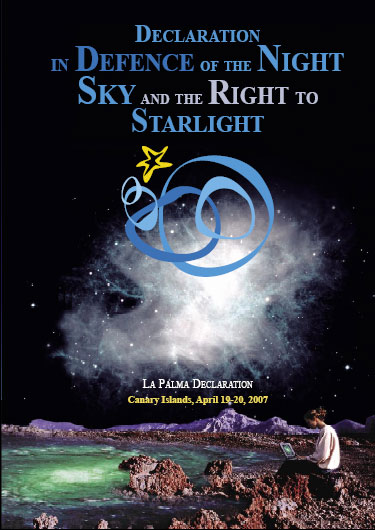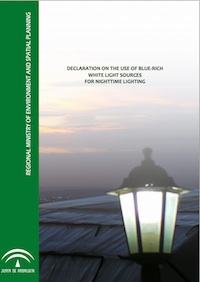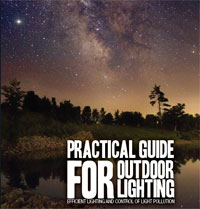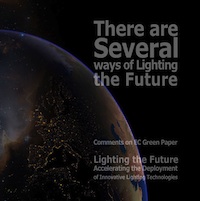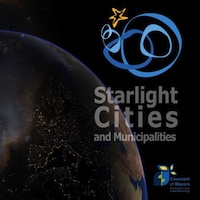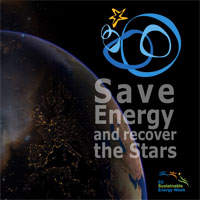Light Pollution - The End of Night?
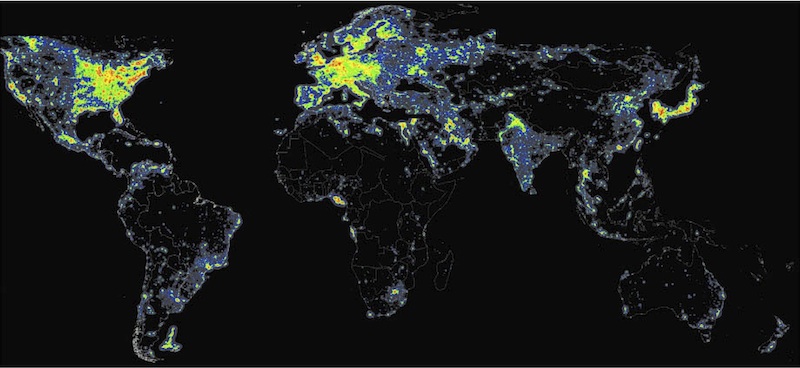
The natural night sky light comes from starlight, zodiacal light (sunlight scattering from dust in our solar system), and airglow (atoms and molecules in the atmosphere that glow in the night after absorbing solar radiation) in roughly equal quantities. Even a small amount of artificial light interferes with this delicate balance, changes the colour of the sky, and overwhelms the starlight. Light pollution has become a worldwide problem as it is gradually diminishing the capacity to observe the stars.This new kind of waste originates cultural, environmental and even energy impacts, with unforeseeable consequences.
Light pollution can be defined as the introduction by humans, directly or indirectly, of artificial light into the environment. Avoidable light pollution refers to light flow emitted at night by artificial light sources which are inappropriate in intensity, direction and/or spectral range, unnecessary to carry out the function they are intended for, or when artificial lighting is used in particular sites, such as observatories, natural areas or sensitive landscapes.
Among all causes having a negative effect on night sky quality, light pollution shows the highest immediate risks but, at the same time, it can be reduced through viable solutions. Irresponsible lighting includes over-illumination, which makes an excessive and unnecessary use of artificial light, as well as poorly designed luminaires which cause glare or sky glow.
The Starlight Saving Time takes into account the time when artificial lighting is strictly necessary . Dark Time saves energy, saves our heritage, and promotes life quality, as well as cultural and scientific investigation. The common factor of these phenomena is the loss of the capacity to observe the stars, together with unnecessary impacts on people life quality, waste of energy, habitat deterioration and negative effects on wildlife.
The Noise of Light
Avoiding the noise of outdoor lighting
Excess illumination of our towns and cities is not a sign of development nor increases safety. It is simply an act of ignorance. Waste of artificial light increases energy consumption and is economically unjustified. It also increases the level of emissions that contribute to climate change.
Recovering the vision of the starry sky
At present most people in the world do not have the possibility to see the Milky Way. The increase in light and atmospheric pollution is blotting out the stars from our sky, causing the deterioration of a legacy with strong cultural, scientific, environmental and aesthetic repercussions.
Solutions?
Promoting outdoor lighting intelligent systems
It would be enough to follow three principles. First, only illuminate what needs to be illuminated. Second, make use of outdoor lighting only when needed. Finally, use luminaires that completely avoid light emissions towards the horizon or up to the sky. It is absurd to waste energy sending light to the stars.
Towards a new culture of outdoor lighting
Limitation of light pollution and recovery of the quality of the night sky should be part of the new culture of sustainable cities committed to climate change.
New windows to the lighting technology
Eco-efficient technologies exist today that allow limiting light pollution: luminaires, sensors, flux and time regulators, motion detectors and new generations of lamps. It is possible to use more efficient lamps that do not emit wavelengths that are harmful to the environment, avoiding the use of white light, including white LEDs.
LOOKING FOR SOMETHING?


Starlight Initiative collaborates with the
PORTAL TO THE HERITAGE OF ASTRONOMYUpdates
- New Brochure of UNESCO`s MAB Programme partnership
- Galicia adopts the Starlight Declaration
- Starlight at the 39th session of the World Heritage Committee
- International declaration warning about the effects of blue-rich white light
- Flyer - Starlight Initiative in partnership with the UNESCO MAB Programme
- Astronomical Heritage - Hawaii 2015
- 2015 International Year of Light
- Montsec - Starlight Destination and Reserve
Starlight Finder
Starlight related links
![]()
Covenant of Mayors Related Initiative
![]()
Colaborating with IAU Working Group
![]()
IUCN Dark Sky Advisory Group
![]()
Dark Skies Awareness Project
![]()
Partnership Unesco-MaB
![]()
Member of the Knowledge Network
![]()
Instituto de Astrofísica de Canarias
|
The Starlight Initiative is designed as an international action in defence of the values associated with the night sky and the general right to observe the stars. It is open to the participation of all scientific, cultural, environmental, and citizens' organizations... |
In partnership with: |
|
|
|
